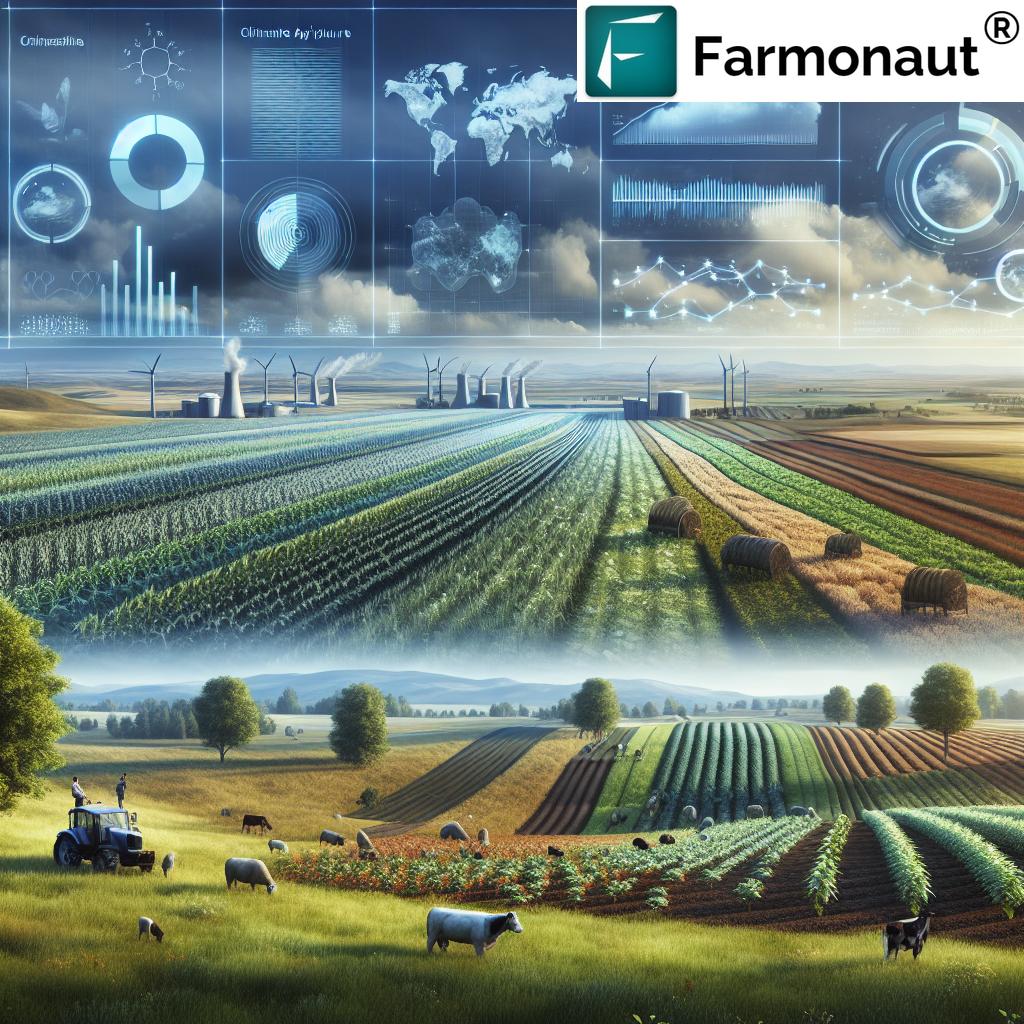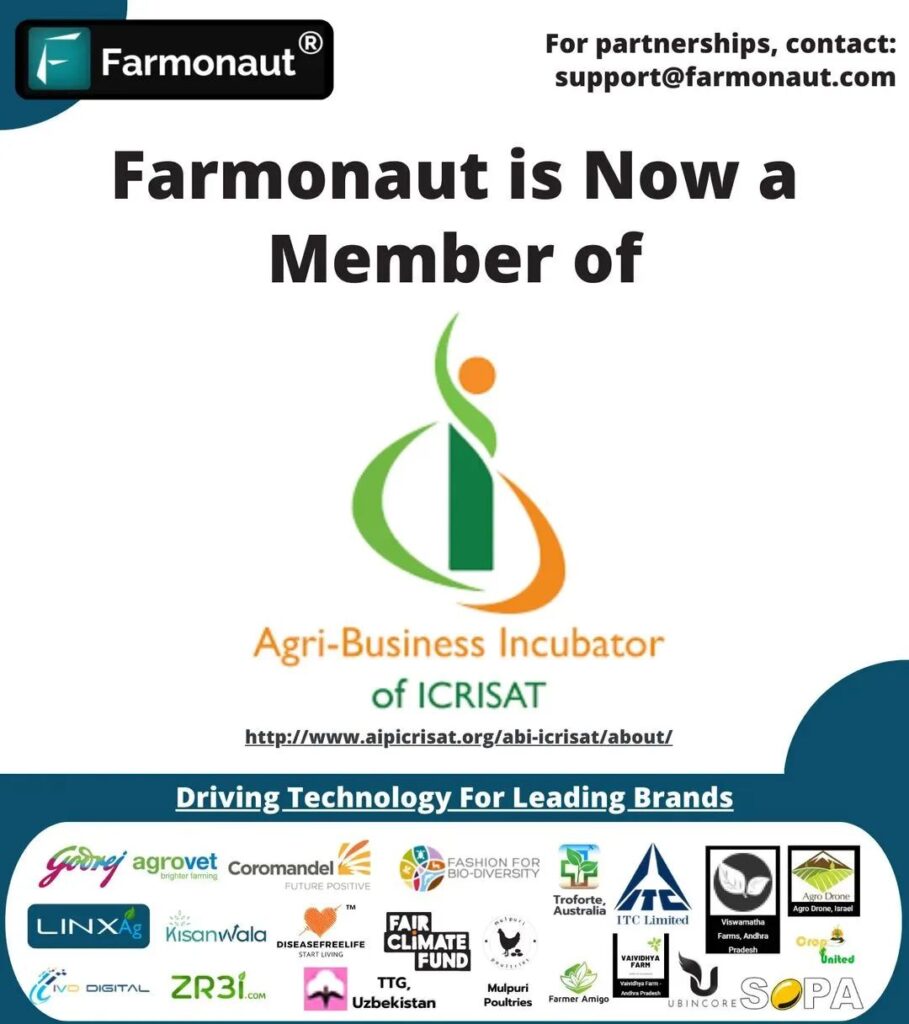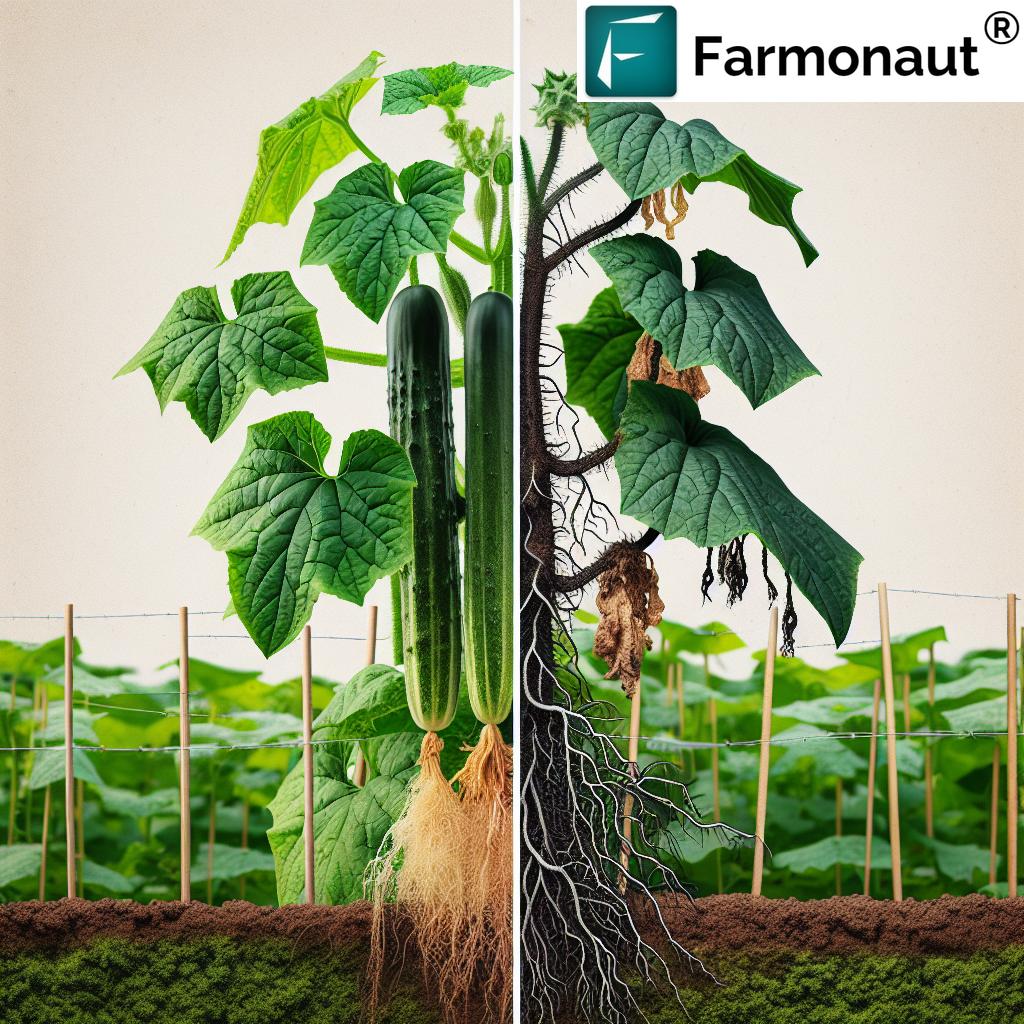4 Stages of Locust, Apple Tree Bud Stages Guide: Sustainable Crop Management & Timely Interventions for 2025
“Locusts progress through 4 distinct life stages, each requiring targeted management for sustainable pest control in agriculture.”
“Apple trees experience 7 bud stages, with precise timing crucial for eco-friendly interventions amid climate change.”
Table of Contents
- Introduction: Understanding 4 Stages of Locust and Apple Tree Bud Stages
- The Four Stages of Locust Development
- Apple Tree Bud Stages: A Comprehensive Guide
- Comparative Development Stage Table: Locust vs Apple Tree
- Climate Variability & Its Impact in 2025
- Precision Management & Integrated Interventions
- Farmonaut’s Role in Sustainable Agriculture: Monitoring & Advisory
- Frequently Asked Questions (FAQ)
- Conclusion: Implementing Knowledge for Sustainable Yield and Ecological Balance
Introduction: Understanding 4 Stages of Locust and Apple Tree Bud Stages
In the evolving landscape of sustainable agriculture in 2025, the ability to understand the stages of crop threats and plant development is more crucial than ever. Locusts, notorious for their destructive impact on crops, and apple tree buds, which have their own unique vulnerability windows, are focal points for effective management amid climate variability. As both pest behavior and crop phenology shift in response to environmental changes, farmers and foresters must integrate detailed knowledge of life cycles into their decision-making processes.
This comprehensive guide explores the 4 stages of locust, apple tree bud stages, emphasizing their intersection in agricultural management. Timely interventions at the right bud or pest development stage can safeguard yield, minimize inputs, and help maintain ecological balance. By delving into the intricacies of egg, hopper, fledgling, and adult locust stages, alongside dormant, green tip, tight cluster, and bloom apple bud stages, this article provides the critical foundation for effective agricultural interventions—particularly as we look to the challenges and opportunities in 2025 and beyond.
The Four Stages of Locust Development: Monitoring, Management & Climate Adaptation in 2025
Locusts pose a recurring threat to crops around the globe, particularly in areas with erratic climate patterns. The 4 stages of locust—egg, hopper (nymph), fledgling, and adult—each present unique challenges and management opportunities. Recognizing and monitoring these developmental stages forms the bedrock of integrated pest management (IPM), ensuring timely interventions before swarms can devastate vulnerable crops.
1. Egg Stage: The First Step in the Locust Life Cycle
- Description: Female locusts typically deposit clusters of eggs in moist soil pods, choosing sites with the right temperature and humidity to enhance offspring survival.
- Duration: Usually lasts 10–20 days, but this incubation window is influenced by climate variability, including warm spells and precipitation changes.
- 2025 Trends: Changing climate patterns increasingly alter egg incubation periods, requiring region-specific monitoring protocols. This stage offers a crucial window for early detection and targeting the pest before hatching.
Effective monitoring at this stage is critical, as interventions like targeted biological agents or tillage can disrupt the locust life cycle before nymphs emerge. In 2025, the use of satellite-based soil moisture monitoring enables precise prediction of egg hatching hotspots.
2. Hopper Stage: Vulnerability & Opportunity for Targeted Control
- Description: Upon hatching, young locusts emerge as wingless nymphs or hoppers. They are voracious feeders, gathering in dense, ground-based groups.
- Development: Typically go through 5 instars (molts) over several weeks, growing significantly in size but remaining flightless.
- Pest Pressure: Since hoppers heavily feed on vegetation yet cannot fly, they are at their most susceptible to control measures. This makes the hopper stage the prime opportunity for deployment of natural predators and targeted biopesticides.
- 2025 Innovations: Integration of AI-driven pest forecasting with on-the-ground insights allows for precision management and minimal intervention, reducing environmental impact.
Understanding the locust hopper stage is essential for farmers and foresters aiming to implement effective, sustainable pest management strategies, especially as habitat conditions change amidst climate variability.
3. Fledgling Stage: Gaining Flight Capability
- Description: After the last molt, locusts develop wings but are not yet fully mature.
- Transitional Phase: This period lasts a few days, during which locusts gain flight capability but remain reproductively inactive.
- Management Implications: Fledglings begin dispersing but do not form swarms. Early intervention remains possible but becomes increasingly difficult as mobility increases.
The fledgling stage represents a narrow window to intercept locusts before they become mobile adults capable of rapid, long-distance movement and swarming behavior.
4. Adult Stage: Swarming, Migration & Reproduction
- Description: Locusts are now fully mature, capable of reproduction, and able to fly long distances (up to hundreds of kilometers in a single day).
- Swarms: Destructive swarms form as adult locusts congregate, with devastating effects on crops and vegetation.
- Forecasting in 2025: AI and satellite imagery now enable highly accurate tracking of adult population densities and migration paths, supporting strategic interventions and region-wide farm management.
Intervention becomes challenging at the adult stage due to the locusts’ mobility and reproductive capability, emphasizing the importance of early-stage monitoring and control.
Apple Tree Bud Stages: A Comprehensive Guide to Development & Timely Crop Management
Apple tree bud stages are pivotal markers of the tree lifecycle and strongly influence vulnerability windows for pests, disease, and climatic events. Each bud stage signals key intervention points for agricultural management—aligning crop treatments, pruning, pollination strategies, and more. Understanding and monitoring the precise timing of these stages is vital for growers seeking to maximize yield and minimize inputs in an environmentally sustainable way, especially as changing phenology continues to shift with regional climate variability.
1. Dormant Bud Stage: Winter Rest & Hardiness
- Description: In winter, apple buds are tightly enclosed in scales to protect them from harsh environmental conditions (cold, wind, and desiccation).
- Importance: This stage ensures cold hardiness and resets the tree’s annual growth cycle, preparing it for spring emergence.
- Monitoring: Warm spells or unpredictable climate change patterns may cause premature budbreak, increasing susceptibility to late frost and reducing the effectiveness of subsequent treatments.
- Best Management: For growers, this is an ideal period for applying eco-friendly soil health boosters and environmental monitoring to support sustainable agriculture practices.
2. Green Tip Stage: The Start of Active Growth
- Description: The first signs of activity after dormancy. Green tips—tiny, vibrant leaves—emerge as the bud scales open.
- Critical Window: Early spring, usually spanning a few days to a week.
- Monitoring & Intervention: Procedures like dormant oil applications (IPM strategies) are frequently timed here to control overwintering pests with minimal risk to beneficials, limiting the need for later-in-season sprays.
This stage not only marks the shift from winter dormancy to growth, but is also the primary point for aligning pest management with bud development—a best practice for precision agriculture in 2025.
3. Tight Cluster Stage: Pre-Bloom Swelling
- Description: Buds swell further, and multiple flower buds form tight clusters.
- Timing: Follows the green tip stage, lasting about a week.
- Vulnerability: This is when pests (e.g., aphids) and diseases (such as apple scab) begin to threaten yield.
- Precision Spraying: 2025 technologies allow targeted application of fungicides and biopesticides, thereby reducing chemical impact.
- Resource: Growers can access large-scale farm management tools to track and optimize cluster-stage interventions.
4. Bloom Stage: Pollination & Fruit Set
- Description: The bloom stage marks the opening of flowers and is critical for pollination, which directly influences fruit set and final yield.
- Environmental Sensitivity: Weather conditions like late frost or rain can impact pollination success.
- Best Management: Integrated approaches, including provision of pollinator habitats and avoiding pesticides during bloom, support both crop and ecosystem health.
“Apple trees experience 7 bud stages, with precise timing crucial for eco-friendly interventions amid climate change.”
Beyond the Four: Further Bud Stages in Apple Trees
While the focus here is on the first four key apple bud stages for intervention, there are up to seven identified stages (including petal fall, fruit set, and fruitlet development). Recognizing the overlap in crop vulnerability and pest cycles is necessary for seasonal planning—with climate variability in 2025 causing these timings to shift year-to-year.
Comparative Development Stage Table: Locust vs Apple Tree
To align management efforts and maximize sustainability in agriculture, understanding how 4 stages of locust, apple tree bud stages correspond across a typical season is key. The comparative table below highlights critical intervention points for farmers and foresters to safeguard yield.
| Stage Number | Locust Stage (Description/Features) | Estimated Duration (Days/Weeks) | Apple Tree Bud Stage (Description/Features) | Estimated Timing (Weeks of Year) |
|---|---|---|---|---|
| 1 | Egg (Female deposits eggs in moist soil pods; incubation influenced by temperature & humidity) | 10–20 days | Dormant Bud (Winter rest, hard scales, cold protection) | Weeks 1–12 (Winter–Early Spring) |
| 2 | Hopper (Nymph) (Wingless, undergoes 5 molts, voracious vegetation feeder, ground-based, high pest risk) | 3–6 weeks | Green Tip (Bud scales open, green shoot emerges; pest/disease monitoring begins) | Weeks 13–15 (Early Spring) |
| 3 | Fledgling (Develop wings, short transitional phase, gain flight, not reproductively mature) | 2–4 days | Tight Cluster (Buds swell, flowers cluster, pest/disease risk peaks) | Weeks 16–18 (Mid Spring) |
| 4 | Adult (Fully mature, can fly long distances, reproduce, form destructive swarms) | 2–8 weeks (varies) | Bloom (Full flower, key for pollination and fruit set, high environmental sensitivity) | Weeks 19–21 (Late Spring) |
Climate Variability & Its Impact on Locust and Apple Tree Development in 2025
The impact of climate change on pest life cycles and crop phenology is becoming increasingly pronounced, especially for the four stages of locust and apple tree bud stages. 2025 brings greater unpredictability in weather patterns, altering developmental timelines for both organisms and thereby shifting the windows for effective interventions.
- Locusts: Egg and hopper stages are highly sensitive to soil moisture and temperature patterns. Short, warm winters may shorten the egg incubation period, leading to unanticipated surges in hopper populations.
- Apple Trees: Warmer late winters can prematurely end dormancy, causing buds to break earlier than usual, which increases the risk of frost damage and misalignment with pest interventions.
- Synchronization Risk: In some years, the hopper stage of the locust may overlap with apple tree bloom, causing maximum pest pressure precisely when crops are most vulnerable.
Farmers and foresters must, therefore, use advanced monitoring tools and integrated management systems to adapt interventions in real-time rather than rely solely on traditional calendars. Farmonaut crop plantation and advisory can be crucial in adapting to these changing realities in the face of climate variability.
Precision Management & Integrated Interventions: Safeguarding Yield in 2025 and Beyond
Successful management of pest and crop cycles is increasingly reliant on precision agriculture—the blend of real-time data, satellite insights, and timely interventions. For the 4 stages of locust, apple tree bud stages, a proactive approach includes:
- Stage-Specific Measures: Deploying biopesticides or natural predators during the hopper stage, and utilizing dormant oil sprays at the green tip phase in apple trees.
- Real-Time Forecasting: Using satellite data and AI-advisory systems to identify when eggs will likely hatch or when apple buds will emerge, enabling proactive, rather than reactive, management.
- Block-by-Block Precision: Tools such as Farmonaut Web & Mobile Apps allow detailed, site-specific monitoring—tracking both vegetation health and pest populations at any scale.
- Sustainable Practices: Eco-friendly solutions (like smart resource allocation and precision irrigation) minimize input waste and promote ecological balance at all crop stages.
For insurance and risk minimization, satellite-based verification—as offered through the Farmonaut Crop Loan & Insurance system—ensures additional security for farmers confronting pest and weather uncertainty in 2025.
Additional Tools for Modern Agriculture in 2025
- Carbon Footprinting: Essential for monitoring greenhouse gas emissions throughout the crop cycle and ensuring environmentally sound practices.
- Farmonaut API & Developer Docs: Enable seamless integration of satellite insights into custom apps or operational workflows, supporting large-scale IPM and crop management.
- Fleet Management: Optimize machinery and logistics to ensure efficient, timely interventions at every developmental stage.
- Traceability Systems: Ensures end-to-end transparency in food production and input use, fostering consumer confidence and compliance with sustainability standards.
Farmonaut’s Role in Sustainable Agriculture: Monitoring & Advisory Systems for 2025
Our team at Farmonaut is dedicated to empowering farmers, foresters, and agricultural professionals with advanced satellite-driven insights for every key development stage. Through our platform (available via web, Android, and iOS apps), we provide:
- Real-Time Monitoring: From the egg stage of locust to the apple tree bud bloom, our satellite imagery and AI-powered advisory system enable the early detection of both pest threats and crop vulnerabilities.
- Data-Driven Recommendations: Our platform’s AI analyzes evolving phenology and pest behavior, alerting users to the optimal intervention window at every stage.
- Resource Optimization: Farmonaut blockchain traceability promotes transparency, while our fleet and resource management tools ensure precise, cost-effective deployment of interventions.
- Sustainability Integration: We enable users to monitor their environmental impact (such as carbon emissions), supporting not just productivity but true ecological balance.
By leveraging Farmonaut, farmers and agro-businesses can react dynamically to unpredictable shifts in stage timing, maintain regulatory compliance, enhance productivity, and ensure sustainable yield.
Frequently Asked Questions (FAQ): 4 Stages of Locust & Apple Tree Bud Stages
What are the four main stages of locust development?
The locust life cycle comprises egg, hopper (nymph), fledgling, and adult stages. Understanding each one is critical for timely pest management—especially as environmental conditions alter the timing of each stage in 2025.
Why is it vital to understand apple tree bud stages?
Apple tree bud stages represent key points in the tree’s development when the crop is most vulnerable to pests, diseases, and climate-induced stress. Timely interventions—such as sprays or pollinator support—depend on recognizing these stages, especially as climate patterns continue to shift.
How do climate changes in 2025 influence locust and apple tree stages?
Climate variability affects the temperature and moisture cues that dictate the progression of both locust and apple tree stages. Warmer winters may shorten locust egg incubation and prompt premature apple budbreak, misaligning traditional intervention windows. Real-time monitoring is increasingly indispensable.
How can satellite-based solutions aid in crop and pest management?
Satellite-driven tools, such as those offered by Farmonaut, enable continuous, large-scale monitoring of vegetation health, developmental stages, soil moisture, and pest threats. Paired with AI advisory and traceability features, these technologies allow farmers and foresters to implement targeted, eco-friendly interventions at scale.
What actionable steps can farmers take to combat locust infestations in 2025?
- Closely monitor egg-laying regions with weather and satellite data
- Deploy biological or environmentally friendly control methods during the early hopper stages
- Utilize precision spraying and adaptive interventions guided by real-time insights
- Align pest management calendars with local apple tree bud stage progression
Where can I find more information about Farmonaut’s agricultural solutions?
Visit the Farmonaut App Portal or see our API Overview for business and developer integration options.
Conclusion: Implementing Knowledge for Sustainable Yield and Ecological Balance
Mastering the four stages of locust development alongside the stages in apple tree bud growth is fundamental to modern sustainable agriculture. The interplay between pest cycles and crop phenology requires integrated, real-time management in the face of climate variability. By aligning intervention strategies with the precise timing of vulnerable stages—supported by advanced satellite monitoring, AI-driven advisory, and data-powered traceability—farmers and foresters can both safeguard yield and maintain ecological balance in 2025 and beyond.
Leveraging tools like those from Farmonaut, the path forward is clear: proactive, stage-specific, and environmentally responsible interventions ensure the sustainability, resilience, and productivity of our farms and natural landscapes well into the future.











